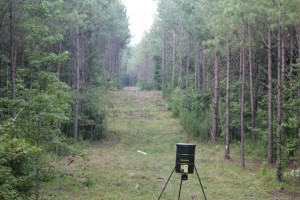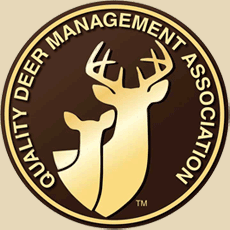Long Range Shooting
One of the attractants to the early deer season in South Carolina is the opportunity to take a buck that is still in velvet. Many hunters will sit over soy bean fields in the afternoons and wait for bucks to appear in the beans. This usually means taking longer shots than are taken at other times of the season. For the sake of this story, long shots are those that are in excess of 200 yards.
Many hunters find it difficult to estimate the yardages beyond 200 yards. The distance can gain quickly when extending the human eye to these ranges. Many of us have heard others say “I took that buck at 300 yards” or “I shot him at 400 yards.” When the truth of the matter is that at 400 yards, very few can even see a deer and determine if it’s a buck or not with the human eye. To see antlers at 400 yards, it has to be an impressive buck. This is where the first tool of long range shooting comes into play. Good optics are a must for identifying your quarry. It begins with good binoculars. While we all like different brands for different reasons, let’s just say that at a minimum they must have a 10x magnification. Personally, I have adjustable magnification on my binoculars to help for the extreme ranges. Not only does a set of good binoculars help when a deer is spotted, they also help in finding deer at long ranges.

Long ranges can be deceiving. This lane is 580 yards long. Knowing the distance to your buck is crucial
Next is a quality range finder. When bullets fall at normal rates, misjudging your target by twenty five or even fifty yards will mean a clean miss or wounded animal. Invest in a high quality range finder like the Bushnell G1300. This range finder has built in bullet compensators that tell you the bullet drop for most popular cartridges. Plus it gives instant distances to your target. Knowing your animal is 285 as opposed to 325 can make all of the difference when attempting long range shots.
When you decide that you want to take your deer, having a good scope with excellent light gathering capabilities and high magnification are instrumental to making good shots. Move your scope to its highest magnification to make the best shot possible.
Once the optics are covered, next is having a good rest. Shooting instructors will always tell you that for the most accurate of shots, three points of impact are needed. This is where your stand comes into play. Having a good stand that affords ample points of contact for the shooter will help make these shots more accurate. The last thing you want is a wounded trophy that you cannot recover. Resting the firearm and your shooting elbow will ensure that you are steady. Follow the mantra of rest, relax, breathe, squeeze and follow through. Rest the gun solidly, relax breath slowly, exhale and squeeze the trigger. Doing so will allow for the most accurate shot placement possible.
Lastly, is perhaps the most difficult to accomplish due to limited availability. Practice. Until you have shot at a known 300 yards, or beyond, many hunters have no idea where their bullet will impact the target at these ranges. Relying on ballistic charts is a start, but it won’t help you in the field if you haven’t practiced. I use charts, and know that in my 30-06 shooting a 150 grain core-lok will be dead zero at 200 yards, but at 300 it is -7.36” and at 400 it’s a hefty -21.25” and at 500 it’s an amazing -45” ! That is a significant difference that I must know before I pull the trigger. Therefore if I hold dead on thinking the deer is 200 when he is actually 300 I miss him completely. However, If you have practiced at 300 or even 400 yards, you know what your bullets will do. Ranging the target, knowing what your gun will do and the ballistic information will allow you to make clean kills at these extreme ranges.
Whether you are hunting soybeans, food plots, pine lanes or pastures, taking long shots at deer is more about execution of marksmanship than about normal hunting strategy. It’s all important and every attention to detail is necessary to bag that trophy when shooting at long ranges.





